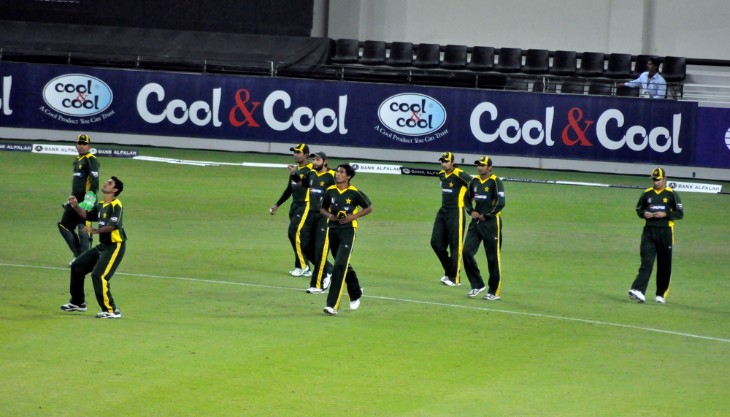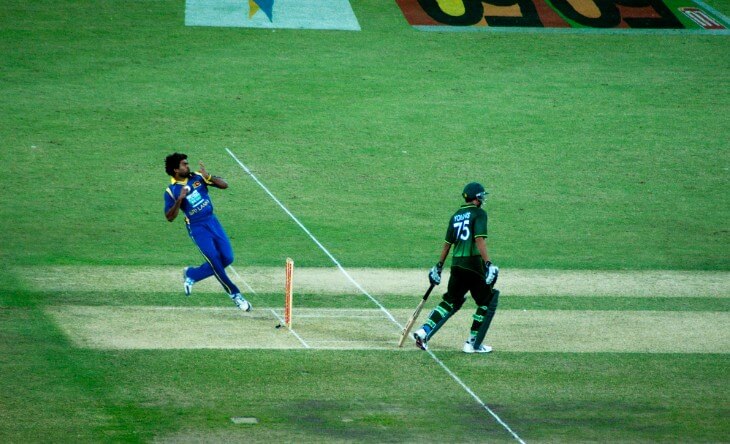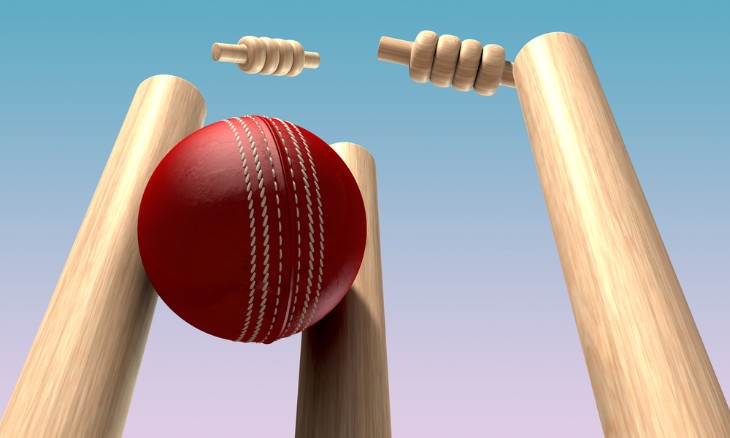Welcome to this comprehensive exploration of the key differences between Test, One-Day International (ODI), and Twenty20 (T20) cricket formats. In this article, we will delve into the distinct characteristics and nuances that define these three forms of the game. Whether you're a cricket enthusiast looking to expand your knowledge or a newcomer seeking to understand the sport's variations, this guide will provide you with valuable insights.
Test Cricket: The Ultimate Challenge
Test cricket is the longest and most traditional format in the world of cricket. Matches in this format can last up to five days, and they are a true test of a player's skills, patience, and endurance. The primary objective in Test cricket is to score runs and take wickets while preserving one's wicket. Each team has two innings to bat and bowl, and the team with the highest total runs wins the match.
The hallmark of Test cricket is the red ball, which tends to swing and seam more than the white ball used in limited-overs formats. This characteristic places a premium on the technical proficiency of batsmen and the skill of bowlers. It's a format where the battle between bat and ball unfolds over extended periods, allowing for subtle changes in tactics and strategies.
Fielding setups in Test cricket are often geared towards building pressure on the opposition through tight lines and lengths from the bowlers. Defensive field placements aim to limit the scoring opportunities for the batsmen, fostering a patient and strategic approach to the game.
ODI Cricket: The Middle Ground
One-Day Internationals (ODIs) occupy a middle ground between the marathon of Test cricket and the sprint of T20s. As the name suggests, ODIs are limited to 50 overs per side, making them a more time-efficient format than Tests. The limited number of overs forces teams to strike a balance between attacking and consolidating, resulting in dynamic and strategic gameplay.
In ODI cricket, batting powerplays, fielding restrictions, and the presence of a white ball introduce unique challenges. Batsmen often focus on building partnerships while trying to maintain a brisk run rate. Bowlers must adapt their strategies to prevent easy scoring while searching for wickets at critical junctures.
The fielding restrictions in ODIs encourage aggressive batting in the initial overs, and this phase is often referred to as the "powerplay." As the innings progress, the game's dynamics shift, with teams looking to accelerate their run rate towards the end while preserving wickets for a final onslaught.
T20 Cricket: The Thrill of the Short Game
Twenty20 (T20) cricket is the shortest and most action-packed format in the world of cricket. Each team faces a mere 20 overs, which results in a fast-paced, high-scoring spectacle. T20 cricket is all about quick decision-making, aggressive play, and the ability to innovate on the field.
In T20 cricket, the focus is primarily on hitting boundaries and maximizing the scoring rate. Batsmen often employ a wide array of aggressive shots, and power-hitting becomes a vital skill. Bowlers must adapt to the aggressive batting approach, often relying on variations and precise yorkers to contain the scoring.
Fielding in T20 cricket is characterized by athleticism and agility. Players are expected to save runs through diving stops and sharp throws, and fielding standards have reached new heights in this format. Quick thinking and sharp reflexes are key for both batsmen and fielders.
T20 cricket has given rise to various domestic leagues, including the Indian Premier League (IPL) and the Big Bash League (BBL), which attract international stars and captivate audiences worldwide. The format's brevity and entertainment value have made it a favourite among fans and players alike.

Player Roles and Strategies
In the world of cricket, the roles and strategies adopted by players can vary significantly across the Test, One-Day International (ODI), and Twenty20 (T20) formats.
In Test cricket, patience and endurance are key for both batsmen and bowlers. Batsmen aim to build long partnerships and accumulate runs over extended periods. Bowlers focus on maintaining consistent lines and lengths to apply pressure, often relying on swing, seam movement, and spin to take wickets. The primary goal in Test cricket is to outlast the opposition and secure victory.
ODI cricket demands adaptability. Batsmen must balance scoring quickly with preserving their wickets, as 50 overs provide a finite timeframe. Bowlers aim to take early wickets to put pressure on the batting side, and spinners often come into play in the middle overs. Fielding in ODIs is intense, with players required to save runs and take catches to shift the game's momentum.
T20 cricket revolves around aggression and innovation. Batsmen look to score boundaries consistently, and power-hitting is prized. Bowlers focus on variations and deceptive deliveries to keep the batsmen in check, aiming to break partnerships and restrict the scoring. Fielding in T20s is marked by athleticism and agility, with players diving and sliding to save runs.
Batting Techniques
Batting techniques vary substantially across the three formats, reflecting the distinct demands of Test, ODI, and T20 cricket.
In Test cricket, batsmen prioritise a solid defensive technique. They must be able to leave deliveries outside the off-stump, defend accurately, and play with patience. Shot selection is conservative, with an emphasis on building long innings.
ODI batting combines the need for solid defensive skills with the ability to rotate the strike and find the gaps in the field. Batsmen aim to score boundaries when the opportunity arises, but they also focus on accumulating runs through singles and twos. Balancing aggression with caution is key.
T20 batting is all about aggression and innovation. Batsmen are expected to hit boundaries regularly and adapt to changing fielding positions. Innovative shots, like ramps, scoops, and reverse sweeps, are common. Quick decision-making and the ability to target specific bowlers are crucial skills.
Bowling Tactics
Bowling tactics vary significantly across Test, One-Day International (ODI), and Twenty20 (T20) cricket, reflecting the distinct demands of each format.
In Test cricket, bowlers aim for consistency and control. They focus on maintaining a steady line and length, often trying to create pressure by building dot ball pressure. Seam bowlers exploit conditions that offer swing and seam movement, while spinners look to exploit turn and bounce. The primary objective is to force the batsmen into making mistakes over extended periods.
ODI bowling combines control with aggression. Early wickets are highly prized, as they can set the tone for the innings. Bowlers aim to swing the new ball, and seamers look to generate movement off the pitch. Spinners play a significant role in the middle overs, using variations and changes of pace to disrupt the batsmen's rhythm. In ODIs, it's crucial to mix defensive and attacking deliveries strategically.
T20 bowling is characterised by variation and adaptability. Bowlers focus on deceiving batsmen with slower balls, yorkers, and bouncers. They often change their lengths and lines to keep the batsmen guessing. In T20s, the element of surprise is a potent weapon, and bowlers need to think on their feet to counter aggressive batting.

Fielding and Captaincy
Fielding and captaincy are essential aspects of cricket, and they too differ significantly across Test, ODI, and T20 formats.
In Test cricket, fielding setups are often designed to create pressure over extended periods. Captains set defensive fields with close catchers, aiming to induce mistakes from batsmen. Fielding standards are high, with players expected to save runs through diving stops and quick throws. Captains in Test cricket need to exhibit patience and tactical acumen, making strategic decisions that can affect the outcome over several days.
ODI fielding is marked by intense athleticism and agility. With fielding restrictions and powerplays in place, captains need to set attacking fields early on. Players are expected to save runs and take catches, as fielding can significantly impact the game's momentum. ODI captains must balance aggression with containment, adapting their strategies according to the situation.
T20 fielding demands quick reflexes and sharp throws. Fielding standards are exceptionally high, with players required to stop boundaries and execute run-outs accurately. Captains in T20s need to make rapid decisions, rotate bowlers strategically, and position fielders based on the batsmen's tendencies. Adaptability and quick thinking are key attributes.
The Impact of Format on Cricket Culture
The various cricket formats—Test, One-Day International (ODI), and Twenty20 (T20)—have not only altered the way the game is played but also shaped the cricketing culture around the world.
In Test cricket, the emphasis on endurance and technique has led to a strong tradition of nurturing young talents through the first-class cricket system. Cricketing nations take immense pride in producing Test players with impeccable skills, and Test matches are considered the pinnacle of the sport. The culture around Test cricket is one of patience, where spectators appreciate the nuances of the game over long periods.
ODI cricket brought a new dimension to the sport. The concept of limited-overs cricket made matches more accessible for a wider audience. World Cups and bilateral ODI series have become major events, fostering a culture of celebration and national pride. The shorter format also encouraged aggressive cricket, leading to innovations in batting and bowling.
T20 cricket has had the most profound impact on cricket culture in recent years. The introduction of franchise-based leagues like the Indian Premier League (IPL) has made cricket a year-round spectacle. It attracts international stars and has transformed the game into a form of entertainment, appealing not only to traditional cricket fans but also to a broader audience. T20 cricket is characterised by flamboyance and crowd engagement, with fans expecting high-scoring thrillers.
These cultural shifts extend to the way players approach the game. Young cricketers aspire to excel in their preferred format, and versatility is highly regarded. While Test cricket remains the epitome of a cricketer's skill, the allure of white-ball cricket and T20 leagues has expanded opportunities and financial incentives for players.
Conclusion
In this comprehensive exploration of Test, ODI, and T20 cricket formats, we've examined the fundamental differences in rules, strategies, and culture. Each format presents its own set of challenges and rewards, catering to a diverse array of cricketing tastes.
Test cricket, with its focus on endurance and technique, remains the traditional heart of the sport. ODI cricket balances skill with the need for quick decision-making, while T20 cricket offers the excitement of power-hitting and innovation.
For more information:


